#Surinamese Javanese culture
Explore tagged Tumblr posts
Text

#recipe#saoto#Javanese food#Surinamese Javanese culture#Kampong Villa Zapakara#Villa Zapakara#children’s museum
0 notes
Text
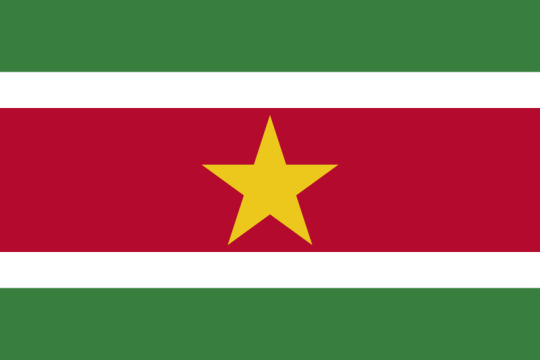
Surinamese people are people who identify with the country of Suriname. This connection may be residential, legal, historical or cultural. For most Surinamese, several (or all) of these connections exist and are collectively the source of their being Surinamese.

The population of Suriname is made up of various distinguishable ethnic groups:
Indigenous Surinamese, the original inhabitants of Suriname, form 3.7% of the population. The main groups are the Akurio, Arawak, Kalina (Caribs), Tiriyó and Wayana.
Afro-Surinamese form about 37% of the population, and are usually divided into two groups:
The Creoles (15.7%). These are descendants of enslaved Africans who also have some admixture from the European (mostly Dutch), Spanish, Portuguese and Jewish colonists
The Maroons (21.7%). These are descendants of enslaved Africans who managed to escape and set up a living in the Amazon jungle. The two main Maroon tribes are the Aukan and Saramaccans. Other smaller tribes include the Aluku, Paramaccan, Kwinti and Matawai tribe.
Indo-Surinamese form 27% of the population. They are descendants of 19th-century indentured workers from British India, who came to work on the sugar estates of Surinam. They are mostly from the present-day Indian states of Bihar, Jharkhand, and Uttar Pradesh, in Northern India.
Javanese Surinamese, descendants of indentured workers from the Dutch East Indies (present Indonesia) on the island of Java, form 14% of the population.
Chinese Surinamese, mainly descendants of the earliest 19th-century indentured workers. The 1990s and early 21st century saw renewed immigration on a large scale. In the year 2011 there were over 40,000 Chinese in Suriname.
European Surinamese make up 1% of the Surinamese population:
The Boeroes (derived from boer, the Dutch word for "farmer") make up the largest group of European Surinamese. They are descendants of 19th-century immigrant Dutch farmers.
The Portuguese Surinamese from Madeira are descendants of indentured workers from Madeira in 1853.
Lebanese Surinamese, primarily Maronites from Lebanon.
Jews of Sephardic and Ashkenazi origin. In their history, Jodensavanne plays a major role. Many Jews are mixed with other ethnicities.
Multiracial Surinamese form 13.4% of the Surinamese population.
#african#afrakan#kemetic dreams#africans#brownskin#brown skin#afrakans#asians#latin america#south america#jews#sephardic#askenazi#madeira#dutch#taino#native american
13 notes
·
View notes
Text
Suriname, a jewel nestled in the northeastern corner of South America, boasts a rich history and breathtaking beauty that captivates visitors from around the globe. This small yet diverse country is often referred to as the "beating heart of the Amazon" due to its lush rainforests, winding rivers, and abundant wildlife.
The history of Suriname is as diverse as its landscape. Originally inhabited by indigenous peoples such as the Arawaks and Caribs, Suriname was later colonized by the Dutch in the 17th century. The legacy of Dutch colonization is evident in Suriname's architecture, language, and culture, as well as in its diverse population, which includes descendants of African slaves, Indian and Javanese indentured laborers, Chinese immigrants, and indigenous groups.
Despite the challenges of colonization and slavery, Suriname's people have persevered, creating a vibrant and unique cultural tapestry. This diversity is celebrated through festivals, music, dance, and cuisine, with influences from Africa, India, Indonesia, China, and Europe blending harmoniously.
Suriname's natural beauty is unparalleled. The country is home to vast tracts of pristine rainforest, teeming with exotic flora and fauna. Visitors can explore dense jungles, meandering rivers, and towering waterfalls, encountering colorful birds, elusive jaguars, and playful river dolphins along the way. Suriname's interior is a paradise for adventure seekers, offering opportunities for hiking, birdwatching, kayaking, and even eco-friendly lodges for immersive stays.
Beyond its untamed wilderness, Suriname also boasts stunning coastal landscapes. The capital city, Paramaribo, is a UNESCO World Heritage Site renowned for its well-preserved colonial architecture, bustling markets, and vibrant nightlife. Along the coast, pristine beaches beckon sunseekers, while offshore, coral reefs teem with marine life, offering world-class diving and snorkeling experiences.
But perhaps the true beauty of Suriname lies in its people. Warm, welcoming, and proud of their cultural heritage, Surinamese are known for their hospitality and sense of community. Whether sharing a meal of spicy roti, dancing to the rhythms of kaseko music, or simply swapping stories under the shade of a mango tree, Suriname's people embody the spirit of unity in diversity.
In every corner of Suriname, from the misty rainforests to the sun-drenched coast, visitors are greeted with warmth and wonder. With its rich history, stunning landscapes, and vibrant culture, Suriname truly stands as a hidden gem waiting to be discovered.
https://youtu.be/fo5Zy4qR-oU?si=WfFcnCKFPlhbQ1EU
1 note
·
View note
Text
Afro-Surinamese

Afro-Surinamese are the inhabitants of Suriname of mostly West African and Central African ancestry. They are descended from enslaved Africans brought to work on sugar plantations. Many of them escaped the plantations and formed independent settlements together, becoming known as Maroons and Bushinengue. They maintained vestiges of African culture and language. They are usually split into two ethnic subgroups (Creoles and Maroons).
The Dutch were involved in the slave trade during the early colonial years. They sought office space for their plantations. The space they received was when the British in the Treaty of Breda (1667) gave land on the northern coast of South America, ceded to them in exchange for New York. Suriname became a slave colony. Slaves were rapidly shipped from Africa to Suriname to work on coffee, cocoa, and sugar plantations for the Dutch and other Europeans....

Maroon group in 1930
Escaped enslaved people in Suriname and French Guiana, known as Maroons or Bushinengues, fled to the interior and joined with indigenous peoples to create several independent tribes...
Afro-Surinamese - Wikipedia
People of Suriname
Ethnic groups
South Asians, descendants of contract labourers from India, are the largest ethnic group in Suriname, making up more than one-fourth of the population. The second major ethnic group, accounting for about one-fifth of the population, is the Maroons (descendants of escaped slaves of African origin). Creoles, who in Suriname are people of mainly African descent, constitute between one-tenth and one-fifth of the population. The descendants of Javanese (people from the island of Java in Indonesia) contract labourers and people of mixed ethnicity each make up almost one-seventh of the population.

About two-thirds of the Surinamese population resides in urban areas. Some two-fifths of them are concentrated in the capital, Paramaribo, and its surrounding area. The capital city is spread out along the Suriname River. Many of its Dutch colonial buildings remain intact, and its historic centre was designated a UNESCO World Heritage site in 2002.
Suriname - Multicultural, Indigenous, Maroon | Britannica

Afro-Surinamese woman, Liesbeth Accord, Suriname, by Misjab
369 notes
·
View notes
Text
Exploring the Richness of Surinamese Food in Hoofddorpplein
Situated in the heart of Amsterdam, the beautiful district of Hoofddorpplein invites the tourist from all over the globe with its various culinary offerings. One of the very popular cusine of this vibrant area is the presence of authentic Surinamese food in Hoofddorpplein that offers a rich taste of Suriname. Let’s get to know about some of the famous dishes of the place that one should not miss while out for a delicious Surinamese eating experience.
1. Roti: A Flavorful Carribean Delight
When it comes to Surinamese cuisine, roti is undoubtedly the star of the show. This mouthwatering dish consists of soft, pillowy flatbread served alongside a hearty filling of curried vegetables, chicken, or lamb. The curry is a tantalizing blend of spices that infuse the dish with a burst of flavour. Locals and visitors alike flock to various places for Surinamese food in Hoofddorpplein to savuor the authentic taste of Surinamese roti.
2. Bami Goreng: Stir-Fried Perfection
Bami Goreng is a beloved noodle dish that has found a cherished spot in Surinamese culinary culture. Stir-fried to perfection, these noodles are combined with a medley of vegetables, your choice of protein, and a delectable mixture of sauces that create a harmonious symphony of tastes. Hoofddorpplein's Surinamese food scene serves up this dish with an unforgettable twist, making it a must-try for food enthusiasts.
3. Pom: A Unique Cassava Dish
For those seeking a unique and flavorful culinary experience of Surinamese food in Hoofddorpplein, Pom is the dish to savour. This dish showcases the fusion of African and Jewish culinary influences in Surinamese cuisine. Pom consists of grated cassava mixed with marinated chicken, spices, and citrus juices, all baked to perfection. The result is a tantalizing blend of textures and flavours that will leave you craving more.
4. Bara: A Tasty Street Food Staple
No exploration of Surinamese cuisine in Hoofddorpplein would be complete without trying Bara. These delectable deep-fried lentil patties are often served as a popular street food snack. Pair them with a variety of chutneys and sauces to experience a burst of flavours that perfectly encapsulate the Surinamese street food scene.
5. Saoto Soup: A Hearty Start or Comforting Meal
Saoto Soup is a hearty and comforting dish that captures the essence of Surinamese food in Hoofddorpplein. Combining influences from Indonesian and Javanese cooking, this aromatic soup features a fragrant broth, tender chicken, bean sprouts, and various accompaniments like boiled eggs, rice, and crispy toppings. It's the ultimate comfort food that warms both body and soul.
6. Nasi Goreng: A Classic Indonesian-Inspired Dish
Nasi Goreng, a dish with Indonesian origins, has been adopted and transformed into a Surinamese favourite. This fried rice dish is elevated with a mixture of vegetables, meats, and aromatic spices, resulting in a dish that's both satisfying and delightful. Hoofddorpplein's eateries offer their unique twist on this classic, making it a delightful culinary adventure.
Conclusion
Hoofddorpplein stands as a vibrant testament to Amsterdam's multicultural essence, and within its culinary tapestry, Surinamese food shines brightly. From the aromatic spices of Roti to the savoury goodness of Nasi Goreng, each dish tells a story of tradition, culture, and the interplay of flavours. So, whether you're a food aficionado or a curious traveler, make sure to explore Hoofddorpplein's Surinamese food scene to embark on a memorable journey through the heart and soul of Surinamese cuisine.
If your taste buds are craving for Surinamese food in Hoofddorpplein, look no further than Roti King at Hoofddorpplein. Immerse yourself in the rich tapestry of Surinamese cuisine and indulge in the mouthwatering delights that this cherished eatery has to offer.
1 note
·
View note
Text
World Regional Geography : Suriname

Astronomically, Suriname is located between 1°-6°N and 54°-55°W with a geographical location on the South American continent, precisely in the northeastern part of South America. It borders French Guiana to the east and Guyana to the west. To the south it borders Brazil , while to the north it borders the Atlantic Ocean.
Suriname has a warm and humid tropical climate because it has a distance of 2 ° - 6 ° north of the equator. The average temperature of the country is 25°C-27.5°C throughout the year in the northern regions, and slightly cooler around 23°C-25°C, in the n-strait region. Suriname has 2 (two) rainy seasons and 2 (two) summers. There is heavy rainfall between May and July when most of the country receives 250 - 400 mm per month, and a small rainy season from November to January which brings about 150 - 200 mm of rainfall per month. In the short dry season from February to April with an average monthly rainfall of 100 mm and a long dry season from August to December with less than 100 mm of rainfall per month. Suriname has an average humidity of 81%.
It was a Dutch colony in 1667 and was first explored by the Spanish in 1449. The majority of the population are ethnic Hindustani imported from India from 1873 – 1917, ethnic Maroons who came from Africa in the 17th and 18th centuries, and Creole (a mixture of white and ethnic whites and black ethnicity), as well as Javanese ethnicity imported from the Indonesian island of Java in 1890 – 1939. Religions include Protestant Christianity, Hinduism, Roman Catholicism, and Islam. Suriname has an area of 163,820 km2 with a population of 632,638 inhabitants (2022 est.).
In commemoration of the 130th anniversary of Javanese migration in Suriname, the Surinamese government sent a request for assistance to the Indonesian government to finance programs and projects. The project in question is the Waka Pasi MSME Center, the establishment of the Documentation Center, and the preparation of books related to the history of Javanese migration to Suriname. In this bilateral cooperation, Indonesia provides grants to the government of Suriname in the form of cash amounting to 1.46 billion rupiah for cultural assistance and includes costs that arising from Grant transfer transactions and procurement and delivery in accordance with Government Regulation No. 48 of 2018 concerning Procedures for Granting Grants to Foreign Governments/ Foreign Lemabag with objectives including:
Improve Indonesia's positive image both in the order of bilateral relations with Suriname and in the scope of international diplomacy.
The implementation of Indonesia's economic diplomacy to Suriname to provide economic benefits to Indonesia by increasing trade, tourist flow, and economy.
Suriname's system of government is based on constitutional democracy where the legislature is the highest body in Suriname's governance. The country is headed by the President with the center of government in Paramaribo. Suriname has used a democratic system based on the constitution since 1987. Surinamese politics uses the framework of a republic, democracy, parliamentary deputies, and a multi-party system.
Fun Fact!
Due to the large number of Javanese ethnic population, the Surinamese Javanese Princess contest will be held in 2022. As the name implies, this contestant was followed by a number of female finalists of Surinamese-Javanese descent. In an effort to preserve tradition, the contest also held a Selametan event. The event invited traditional leaders and provided Javanese specialties.
Source: https://climateknowledgeportal.worldbank.org/
LDKPI.KEMENKEU.GO.ID
REPOSITORY.UMY.AC.ID
1 note
·
View note
Photo

Goso , August 9th 2022 : 132 years of Javanese Immigration. . O Gusti (God in Javanese), we thank you that you let our ancestors make the crossing as immigrants to our beautiful country Suriname. We must be grateful to our ancestors for what we have become today and the generation after us. No time to party but just stop and reflect on what our ancestors had to endure before, during and after their crossing. May the Almighty give the Surinamese community, in particular the Wong Djowo, a lot of wisdom, strength, peace, respect and love for each other, faith and hope and live in harmony with each other. 💛 . . . #tradition #suriname #rasdjowo #javaan #memories #culture #retro #believe #village #sawah #javanese #javaneseculture (at Lelydorp) https://www.instagram.com/p/ChCXnWYue2I/?igshid=NGJjMDIxMWI=
#tradition#suriname#rasdjowo#javaan#memories#culture#retro#believe#village#sawah#javanese#javaneseculture
5 notes
·
View notes
Photo
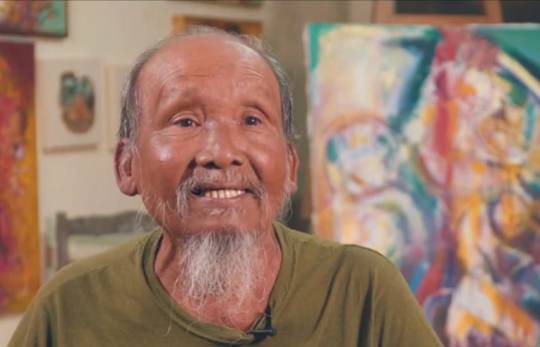
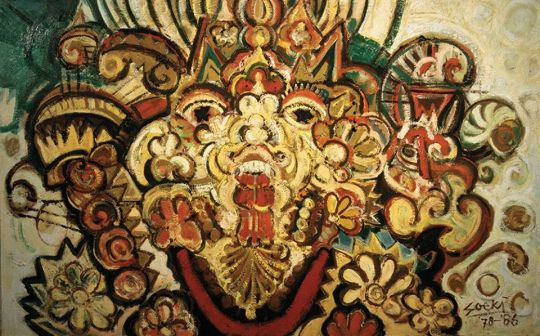
~Sexypink~ Special Surinamese artist 'Soeki' Irodikromo’ died Today the famous painter, maker of ceramic art and Batik, Sukidjan Irodokromo, died in his native country Suriname. He turned 75 years old. Soeki leaves the world special works of art. Sukidjan Irodikromo was born June 20, 1945 in Pieterszorg in Commewijne District. From 1963 to 1967 he attended a course at the Cultural Center Suriname (CCS school for Visual Arts conducted by Nola Hatterman) in Paramaribo. Back then, American President Johnson bought a painting from him, and a week later, Soeki was told that he was receiving a grant from STICUSA (Cultural Cooperation Foundation with Suriname and the Netherlands Antilles) to go to the Netherlands and study there. From 1967 to 1972 he did the free painting and chart at the Academy of Fine Arts in Rotterdam and from 1971 to 1972 he deepened himself into the ceramic. Afterwards he continued his studies with a batic training at the ASRI in Jogyakarta, Indonesia.
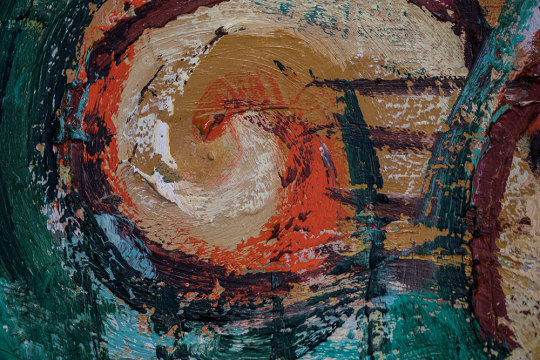
Back in Suriname he introduced batik painting there. Both in his batik cloths and oil paintings and his ceramic (vases and images), Irodikromo achieved a large production of almost constant quality. His work is in collections spread all over the world. He also made the illustrations in various books. From his admiration for Cobra expressionism, he started working in a style that connected the half abstraction of Cobra to themes and symbols from Javanese mythology. With this he was the first Surinamese artist to bring together tradition and modernity in his own idiom. Sukidjan Irodikromo's works of art are inspired by the Wayang game, Kantjil and Anansi tori. He is among the generation and caliber of Erwin de Vries, Ruben Karsters, Rudi de la Fuente and Paul Woei. Important message he leaves us is: ′′ Let your kids go to school. That gives them power. In the Netherlands I had adjustment problems and language problems. But that didn't stop me from moving on. I dared, because it's about the quality of my work ".
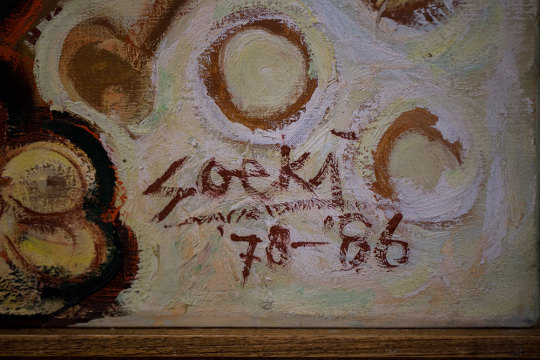
Family background
His parents were farmers. The plantation life used to be very simple. Grandpa and grandma could teach us nothing but work, because for other things they had neither time nor knowledge. Working with a ' berang ' (houwer) and ' pacol ' (hoeing) was the only thing that was taught them. Building a house was done with 'gotong royong' (mutual assistance). Neighbors and family helped each other. A lot of ' teloh ' (cassave), ' gedang ' (banana), fresh fish, such as ' teri ' (salted little fish) and ' ikan asin ' (salty fish) were eaten daily. Sometimes the family had nothing and ate rice with the oil in which the fish was baked. Meat was only eaten when someone threw a party and with 'Bada' (Sugar Fest). Father Irodikromo would have saved up for new pants for the kids.
People in that time believed in ' kersane Allah ' (God's will). ′′ I leave it to tomorrow's day was what people said. Closing the plantations was quite a vein release for many families. Also for the Irodikromo family. They subsequently used the possibility to purchase land on the plantation Koewarasan, which the family moved to.
http://www.oas.org/artsoftheamericas/soeki-irodikromo

#Sexypink/Surinamese Artist#Sexypink/Soeki Irodoromo#Sexypink/bereavement in Surinamese Art community#Soeki Irodokromo#Surinamese Art#Surinamese Painter#icon#bereavement#death
5 notes
·
View notes
Text
Final Portfolio: By Chelsea Brandon
This semester I've written so many different pieces in this First Year Writing class. Now, for the second time, I’ll be able to take my favorite pieces that I've written throughout the semester and compile and display them for this final project. The process for compiling all my favorite works was quite simple, I just followed the theme of “me.” In every piece I've written, they were all about me. I think writing about oneself is one of the best themes to write about and that's exactly what I've done this whole semester. All I did was carefully pick out my favorite pieces that I've written and compiled them together! I also focused on picking out pieces that have the similar theme of culture. Culture is so versatile because there are so many different types of cultures and each culture goes into depth as well. When talking about culture, you can talk about food, music, dance, language and so much more.
I chose to display my Literacy Narrative because I just really wanted to talk about my culture again. I felt that I would be able to go back to edit and include more information and knowledge about my Surinamese culture which not many people know much about.
Literacy Narrative:
Literacy is so important to one’s life. It teaches people about their heritage which is such a beautiful thing. My culture is Surinamese. A lot of people have not heard of the small country located near the earth's equator. I honestly don’t blame them though. Paramaribo, Suriname is not a well known country. People always ask me what I am and when I tell them I'm Surinamese, they look at me like I'm crazy. The cool thing about being surinamese is that it’s a culture filled with a bunch of different cultures. Suriname is one of highly diverse countries in regards to biodiversity. There are surinamese people who are black, white, hispanic, asian, indian and more! That’s one of my favorite things about being surinamese. It’s just so rich with different cultures. Another one of my favorite things about being surinamese is the food literacy. Surinamese cuisine is a combination of many international cuisines including Indian, African, Indonesian (Javanese), Chinese, Dutch, Jewish, Portuguese, and Amerindian cuisines. I find it so cool that all these countries come together to form the country we call Suriname. Another personal favorite is the music. Traditional Surinamese music is called “Kaseko'' music, however, Surinamese people tend to listen to a lot of West Indian and Caribbean music. This here is another example of multiple cultures coming together in the Surinamese culture. There’s one song that I honestly don’t even know the name of but it’s a birthday song and when it’s being played, family members link arms and dance back and forth with the birthday boy\girl in the middle. It has the same tune as the song “When the Saints Go Marching In.” It's one of my favorite Surinamese traditions. Attire is also a quite beautiful thing about Surinamese culture. My cousin recently got married in september and as one of her outfit changes, she changed into a traditional surinamese dress called a “koto.” It’s typically worn with a head wrap. It’s a very beautiful outfit. However, there is no purpose for wearing the koto. All that is known is that it was originally worn by Afro-Surinamese women before the emancipation during the Dutch colonial period in 1863. These are just some of the beautiful things I get to experience in Surinamese culture. And as I'm writing this, my mom is playing Surinamese music in the kitchen!





So I included these screenshots in my assignment because I felt that it was just a good example of "everyone makes mistakes" and it's not that uncommon! I know it doesn't have much to do with the common theme but I just wanted to include it!

This discussion post that I sent in was one of my favorites. I was so proud of this assignment. It was all about not being fine and sometimes that's okay.

The "I Remember" mimic assignment was a personal favorite for me because I was able to reminisce about my childhood. It was just overall a fun assignment and meant a lot to me to be able to write about it!
0 notes
Text
Accepting Hybridized Identity: A reading of the representation of the Javanese Surinamese in present time
(Originally written on July 7th, 2020)
The city of Amsterdam has submitted a bill to formally apologize for its role in the Transatlantic Slave Trade, as a way to claim full responsibility of the Dutch slave history. The city was one of the founders of the Society of Suriname, a private colonial company that made profit of the slave trade in the colony. The four hundred years of Dutch imperial rule have only just now started to be brought more into conversation with the present, a development that destabilizes rooted notions of Dutch heritage, culture and self-image. On July 1st 2020, during the annual celebration of the abolishment of slavery in Suriname in Amsterdam called Keti Koti – stemming from Sranantongo, meaning ‘broken chains’ – the city of Amsterdam is planning to officially apologize.
NiNsee, one of the initiators behind Keti Koti, is the National Institute Dutch Slavery and Heritage. NiNsee incites to work towards common future after a past of difference through remembering the victims and celebrating the abolishment, doing research and developing educational programs and art projects. There is a great need to consciously deal with this part of history since many people from Suriname and the former Dutch Antilles reside in the Netherlands. The inextricable connection between these three stems from colonialism and slavery, its presence putting pressure on the acknowledgement of the trails of the past.
Other organizations have their mission into archiving this past, such as the New Urban Collective that established the Black Archives, a historical archive that homes collections of books, artifacts and articles from different black writers and social scientists. These developments in are celebratory for their demand for opening up the Dutch slavery history, the representation of Suriname and the black experience in the Netherlands.
Having visited the Black Archives myself as a person of Javanese Surinamese descent, through self-positioning, I have felt connected to the Surinamese heritage presented within that historical archive. A country with its history crossing its national borders, the Netherlands and its trails can be found wildly across the world. Though Javanese Surinamese have not experienced slavery, the colony of East-Indies was a large part of the Dutch colonial empire that prompted the Javanese community to Suriname in their shared subjection. With origins in Suriname, Javanese Surinamese transcend the two empires, both East and West, by having roots in Indonesia, the Eastern part. Javanese Surinamese have never been enslaved, but the existence and following abolishment have ensured the Javanese diaspora across the globe. But both slaves and the Javanese Surinamese have experienced strategies of dispossession and accumulation happened right after each other.
By viewing Amsterdam as a colonial archive, its structures and persistent demand for acknowledgement can be widely recognized. The city of Amsterdam is going to apologize for slavery, in whatever extent that can be, and collections of cultural artifacts and heritage are being assembled to sharpen the representation of Surinamese lived experience. Though there is no one Surinamese experience, I think it is interesting to track the representation of Javanese Surinamese in the Netherlands within this evolving consciousness, for the dislocation from the Eastern Dutch empire to the West, and to the Dutch after, is adding another layer to their Dutch identity.
Suriname is home to many different ethnicities where none of them has the majority, that as a result of the centuries long Dutch intervention on the world stage, have dealt with slavery, racism and oppression each in their own way. Though not diminishing slavery as undeserving of having to apologize for, I argue that apologizing for slavery should entail the acknowledgement of the after-effects and social structures that have seeped into other cultural groups in Dutch society because of its existence.
In this essay I will examine the extent in which the representation of Javanese Surinamese people and their lived experience falls short in the increasing acknowledgement of the entire Dutch colonial history in the Netherlands. By using Gloria Wekker’s White Innocence I want to bring this cultural group in conversation with racism in the Netherlands to further explain through Paul Gilroy’s Black Atlantic that Javanese Surinamese are a transatlantic collective that embody a complex identity performing afloat in Dutch notions of race.
In her book, Gloria Wekker uses the term “colonialism-of-the-exterior” to explain how Dutch common and academic sense have distanced themselves from the former Dutch colonies to such an extent, that the possibility of imperial patterns of thought and affect is erased in studying the Netherlands[1]. This defamiliarization with this enormous part of history has ensured the division between the ‘metropole’ and the colonies to prevail zero affect off of each other. From this could also be argued that this division of feelings of affect moves further to in between the two colonial empires. The reception history of both the Eastern and Western empires in the Netherlands is conceived differently, where feelings of regret remain to the East Indies and feelings of relief to Suriname[2]. So far, Dutch scholars have paid little attention in specializing in the interaction between the two, which foregrounds why there has been little representation of descendants in the Netherlands from both empires.
The emergence of the Javanese population in Suriname followed after the abolishment of slavery in 1863, where through indentured labor workers from The Netherlands-Indies have been shipped to the Western empire. Though already have had labor workers from India (then under British nationality), it seemed more profitable for the Dutch to conceive workers from their own colony to bypass any complications, as the British government needed to authorize new arrivals to Suriname.
The years between 1890 and 1939 have been marked as the immigration stage, where Javanese had to follow the contract they had signed in their native country that consisted of the plantation labor for a minimum period of five years[3]. They were allowed to live on the plantations and were given houses, food and medical care which was below average. They were not exactly free either, as they could be criminally prosecuted if their superiors suspected them guilty of laziness or when they refused to obey commands, even if in reality it was not the case, their superiors could punish their subjects just because they stood above them. The same imperial power has been exerted onto these subject bodies as before the abolishment, which carry the same feelings of privilege and entitlement that reigned the Dutch imperial history during slavery. Though under different colonial rule, it is apparent how under the term ‘labor-workers’, Javanese have experienced the same oppression by the Dutch as their enslaved predecessors.
A lot of workers chose to stay after their contract instead of remigrating back to the Netherlands-Indies, as they have been given the opportunity to stay in Suriname and granted a parcel of land and were scared of debts or facing relatives. During and after World War II, many of them moved to the capital and into institutions, therefore creating space and labor differentiation between those that chose to stay at the outskirts. This division prompted several social political struggles where Javanese of the capital, Paramaribo, were being put more in contact with Western ideals and images. Because they have been put into contact with other cultures on such a tiny scale within such a short period of time, the use of Surinamese-Javanese language, which is basically watered-down Javanese, was minimized and the use of Sranantongo and Dutch increased that from 1975, prompted the integration into Suriname.
Besides a different layer of colonial rule, Javanese have suffered integration into a country that was built upon colonialism, that consisted of many cultures and have created a space between Javanese from the Netherlands-Indies and the ones that left for Suriname. This brings me to the concept of diaspora, a scattered network of ethnically and culturally related peoples(304). The diasporic identity of Javanese Surinamese in this sense, have travelled through different continents in search to make a homeland, which created new communities in each country. Though their destination changed, the journey have left marks which then develop into networks of transnational identifications. The danger of these identifications is that in time they will get so ambiguous and inconceivable, that attempts for representation of this cultural group can lead to feelings of displacement and misrecognition.
After 1975, groups of Javanese Surinamese have made their journey to the Netherlands, where they have been faced with a second feeling of misplacement. Wekker describes the concept of race in the Netherlands in terms of ethnicity as race, where ethnicity “indicates the social system that gives meaning to ethnic differences between people—to differences based on origin, appearance, history, culture, language, and religion”[4]. Through the use of ethnicity as race, they immediately reference the Other. The Dutch merge the biological with the cultural to such an extent that the affects of history’s course have made them two sides of the same coin.
In Suriname, in relation to Afro-Surinamese and Hindostani (descending from India), Javanese have encountered stereotypes throughout their history where they have been named as favourable quiet, orderly and decent since they have emerged in Suriname in such a small time they did not pose as a threat[5]. When Javanese moved to Paramaribo, other prejudices painted them as uneducated, deceitful, lazy and maintaining low moral standards[6]. In the Netherlands, Javanese Surinamese are rarely publicly represented and their lived experience in cultural archives are generalized into post-colonial work, which for the most part reigns the slavery period of Dutch history. Though not dismissing the affects of this time, Javanese Surinamese have also dealt with the after-effects of slavery in Suriname and are dealing with the after-effects on colonialism on behalf of both empires in the Netherlands. Because their diaspora happened within such a small amount in time compared to the entire imperial rule of the Dutch, I think Javanese Surinamese are harder to represent through the lens of either the Eastern nor the Western empire.
Paul Gilroy has introduced the Black Atlantic as diasporic identities that are conceived as being in motion rather than fixed entities[7]. Though his theory covers the black diaspora of the Atlantic, this could be extremely helpful into understanding the position that Javanese Surinamese hold within the Dutch community in times of resistance and demand for acknowledgement. He continues to argue that black identities should be understood in its forced hybridity, rather than just blackness. The difference in cultural identity of those black subjects across the globe foreground why these identities should not be generalized, as they have experienced the same history in different continents. Javanese Surinamese in this sense, cannot be understood as just allochtoon, just Surinamese or just Javanese, as their history crosses different countries and have developed in different ways within those countries. Representation should made in respect of those differences and not in narrow-minded boxes of who fits where.
For example, the Javanese people that moved to Suriname were not all Javanese; some of them were from Sundanese and Madurese descent and some have been engaged from Sumatra and Borneo[8]. The Javanese culture that has been brought to Suriname was not purely Javanese, same for the language. Through the years, Javanese have been attaining a second language, Sranantongo and later Dutch. The native language was not necessarily suppressed, but colonialism has impositioned the Javanese to gain the other two languages. One way of decolonizing language is to own the language colonialism imposed[9], which could be read in the same way of the Black Atlantic into the extent to which Javanese Surinamese are represented in the Netherlands. It is crucial to own the dispersion of cultural identity imposed by Dutch colonial history, to accept its hybridity into the representation of these bodies in Dutch society. My argument does not condemn the Afro-Surinamese experience and their rising acknowledgement in present day, but my feelings of rejection as part of a Surinamese cultural group cannot be entirely ignored. The extent to which the lived experience is visible in our society is hardly noticeable but if we can create a narrative based on hybridity and celebration of this ambiguous identity, we can achieve some sort of representation of Javanese Surinamese that does not make them feel invisible.
0 notes
Text
#dance#Surinamese Javanese culture#Kampong Villa Zapakara#Villa Zapakara#children’s museum#Paramaribo#Suriname
0 notes
Text

#gamelan#musician#Surinamese Javanese culture#Surinamese Javanese boy#child#child musician#children’s museum#Kampong Villa Zapakara#Villa Zapakara#Paramaribo#Suriname
0 notes
Text

2 notes
·
View notes
Text
#Purwa-Laras#video#gamelan#Surinamese Javanese music#culture#Villa Zapakara#Kampong Villa Zapakara#children’s museum#Paramaribo#Suriname
1 note
·
View note
Text

#Kampong Villa Zapakara#Villa Zapakara#children’s museum#Surinamese-Javanese culture#Paramaribo#Suriname
0 notes
Photo

. Sunday, August 9 : 130 years of Javanese Immigration. . . O Gusti (God in Javanese), we thank you that you let our ancestors make the crossing as immigrants to our beautiful country Suriname. We must be grateful to our ancestors for what we have become today and the generation after us. No time to party but just stop and reflect on what our ancestors had to endure before, during and after their crossing. May the Almighty give the Surinamese community, in particular the Wong Djowo, a lot of wisdom, strength, peace, respect and love for each other, faith and hope and live in harmony with each other. . . . . 📷: @jvllivan . . . . . #tradition #suriname #rasdjowo #javaan #Alljahnkastoredjofotografie #memories #culture #goodmorning #sugengsiang #retro #belief #culture #village #sawah #javanese #instagood (at Lelydorp) https://www.instagram.com/p/CDrScm2pnuE/?igshid=1wlshi5gz3l2r
#tradition#suriname#rasdjowo#javaan#alljahnkastoredjofotografie#memories#culture#goodmorning#sugengsiang#retro#belief#village#sawah#javanese#instagood
0 notes